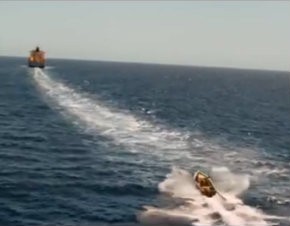The view from above

The philosopher and historian Pierre Hadot wrote that “the view from above” is the “philosophical way par excellence of looking at things.” Seeking a cosmic perspective on human existence, ancient lovers of wisdom cultivated a view from above through spiritual exercises. Distance, they argued, reveals connections, correspondences and patterns that cannot be seen up close. From a bird’s-eye view, as the poet Goethe wrote, we can see “the mad labyrinths of the world spread out before us.”
I was reminded of the ancient desire for an encompassing view of the world while watching Paul Greengrass’s film Captain Phillips. Based on the hijacking of an American container ship by young Somali pirates and their kidnapping of the ship’s captain, the film is marked by frequent shifts of perspective. We move back and forth between the bridge of a massive container ship afloat in the Indian Ocean and the hull of the pirates’ tiny skiff as it is battered by the waves. One moment we are in the captain’s SUV, listening to his worried conversation with his wife about their children’s futures; in the next we are in a camp where Somalis live in inhuman conditions, the monotony of their days broken only by the appearance of armed men who take the young men out to sea to rob passing ships.
By insisting that we regard the events of the film from the perspective of every character, the film reaches for an encompassing view of the world’s “mad labyrinths.” From a distance the defining image of the story is clear: a very small boat gaining on a very large one. We look down on the two boats from the sky; we see them locked in relationship on the ship’s radar screen. We realize that, long before they ever meet, the lives of the pirates and the captain were already bound together through globalized systems of power and trade.




